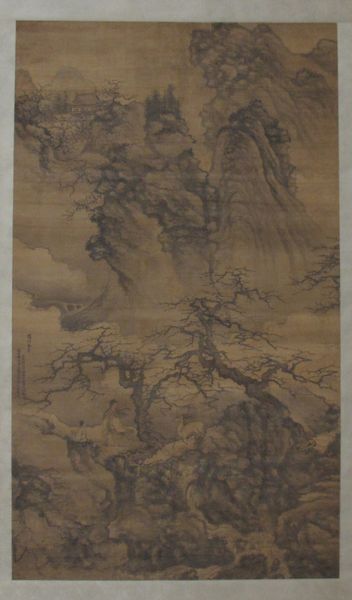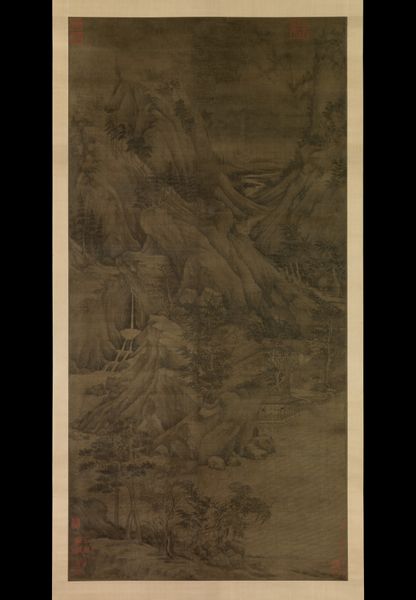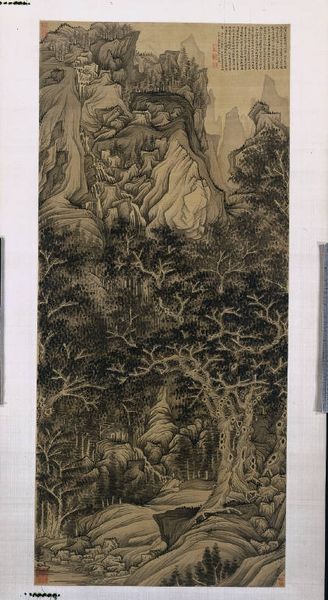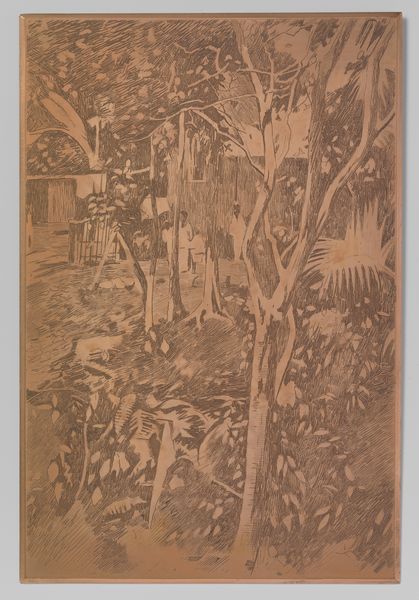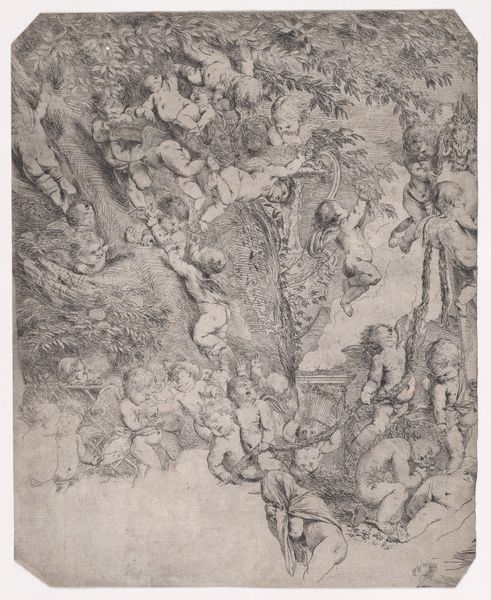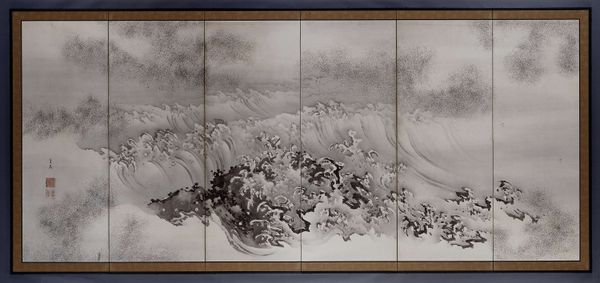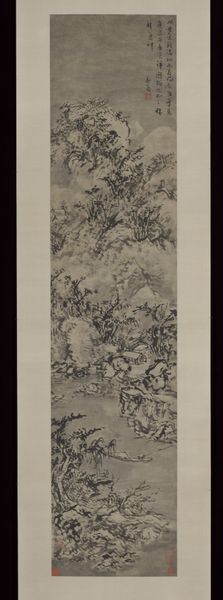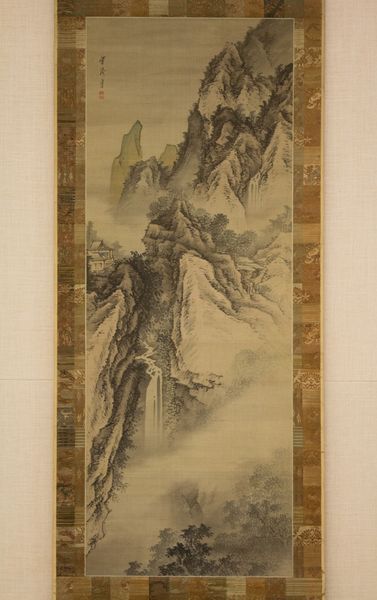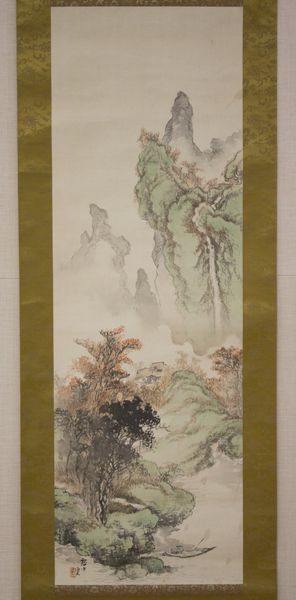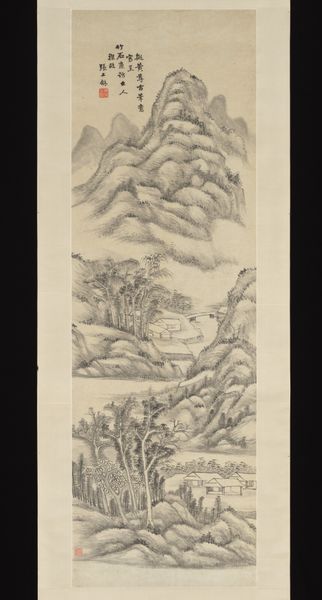
Recluse playing the zither in a pine grove 1530 - 1550
0:00
0:00
drawing, painting, paper, ink
#
drawing
#
ink painting
#
painting
#
asian-art
#
landscape
#
paper
#
22_ming-dynasty-1368-1644
#
ink
#
china
Dimensions: Image: 137 1/2 x 40 1/2 in. (349.3 x 102.9 cm) Overall with mounting: 193 1/2 x 50 3/8 in. (491.5 x 128 cm) Overall with knobs: 193 1/2 x 55 7/8 in. (491.5 x 141.9 cm)
Copyright: Public Domain
Editor: We’re looking at Wen Zhengming's "Recluse Playing the Zither in a Pine Grove," dating from around 1530-1550. It's an ink painting on paper, and what strikes me immediately is the incredible detail and the almost dreamlike quality of the landscape. What do you see in this piece, particularly in how it reflects the culture of its time? Curator: The symbolism woven into this work speaks volumes about the values cherished during the Ming Dynasty. Notice how the recluse isn't simply in a forest; he is specifically in a *pine* grove. The pine tree, in Chinese art, is a powerful symbol of resilience, longevity, and virtue – qualities admired in a scholar-official who might choose a life of reclusion over courtly service. And then consider the zither. What kind of emotional resonance do you feel emanating from this imagery? Editor: It evokes a sense of peacefulness, almost isolation, but also a deliberate choice. Is he rejecting society, or seeking something else? Curator: Precisely! The act of playing the zither is significant. It represents cultivation, artistic expression, and a connection to nature. The sound of the zither, often associated with refinement and intellectual pursuits, blends harmoniously with the natural surroundings. This suggests a profound connection between the individual, art, and the cosmos, a pursuit of harmony lost to courtly life. Is it possible to identify with him, in some fashion? Editor: I guess there’s a universal desire to find peace and meaning, away from the noise, though maybe not literally up a mountain! I see now that this artwork captures a cultural ideal of seeking wisdom and serenity through art and nature. Curator: Indeed. The painting encapsulates cultural memory, linking the viewer to a historical ethos, urging us to reconsider the enduring human desire for tranquility and contemplation in an increasingly turbulent world. It is quite poetic!
Comments
No comments
Be the first to comment and join the conversation on the ultimate creative platform.

